SOLFI: An Integrated Platform for Sustainable Urban Last-Mile Logistics’ Operations—Study, Design and Development
Abstract
1. Introduction
2. Literature Review
2.1. Sustainability in Urban Logistics: Concepts and Challenges
2.2. State of the Art: Solutions for Urban Logistics
3. Materials and Methods
3.1. SOLFI Development Protocol
3.2. Techniques for Understanding the Problem and Collecting SOLFI Requirements
4. Result: An Integrated Platform for Sustainable Urban Last-Mile Logistics’ Operations—SOLFI
4.1. SOLFI: A Conceptual Perspective
4.2. SOLFI: Architecture and Technological Perspective
- Web applications
- -
- Opt.Solfi.OrderReception—application of reception/management of orders by External Logistics Operator
- -
- Opt.Solfi.NetworkSchedules—application for managing the resources of companies, as well as the network and schedules. It will be mainly used by Public Transportation Operator.
- Responsive Web Applications
- -
- Opt.Solfi.Distribution—application for consultation/management of distribution plans by External Logistics Operator, Public Transportation Operator and Micro Logistics Operator.
- -
- Opt.Solfi.Customer—application for consultation of the tracking of orders by the sender and/or receiver
- WebAPI
- -
- Opt.Solfi.WebApi.ResourceManagement—API used by NetworkSchedules and Distribution applications
- -
- Opt.Solfi.WebApi.OrderReception—API used by the OrderReception application
- -
- Opt.Solfi.WebApi.Customer—API used by Customer application
- Authentication and authorization server
- -
- Opt.Solfi.Auth—Management of Company Types, Companies, User Profiles and Users
- Service that runs the algorithms
- -
- Opt.Solfi.Algorithms
4.3. SOLFI Graphical User Interfaces
4.4. Pilot Test with SOLFI and Some Qualitative Results
- -
- The system proved to be effective in the management of small parcel deliveries, thus being able to contribute to the reduction of transport cars entering the cities and, with this, i.e., reduce the circulation of polluting vehicles in the cities to detriment of environmentally friendly vehicles.
- -
- The system is easy to use and does not cause any negative reaction from the user.
- -
- From the logistics company’s point of view, the system can support real-time decisions, helping in the internal management of orders.
- -
- Include the possibility of returning the order if the customer is no longer interested in keeping it. This situation occurs when the order is sent using the cash-on-delivery option. Currently, the SOLFI platform does not address return flows.
- -
- Use of a network of shops or network of lockers that can act as internal hubs so that the Micro logistics operator does not have to be at the internal hub at the time of the arrival of the bus to collect parcels, giving it greater flexibility in managing its delivery process.
5. Discussion
6. Implications and Contributions
7. Conclusions and Future Work
Author Contributions
Funding
Institutional Review Board Statement
Informed Consent Statement
Data Availability Statement
Conflicts of Interest
References
- Pelletier, S.; Jabali, O.; Laporte, G. 50th Anniversary Invited Article—Goods Distribution with Electric Vehicles: Review and Research Perspectives. Rev. Res. Perspect. Transp. Sci. 2016, 50, 3–22. [Google Scholar] [CrossRef]
- Amaya, J.; Delgado-Lindeman, M.; Arellana, J.; Allen, J. Urban freight logistics: What do citizens perceive? Transp. Res. Part E Logist. Transp. Rev. 2021, 152, 102390. [Google Scholar] [CrossRef]
- Kiba-Janiak, M.; Marcinkowski, J.; Jagoda, A.; Skowrońska, A. Sustainable last mile delivery on e-commerce market in cities from the perspective of various stakeholders. Literature review. Sustain. Cities Soc. 2021, 71, 102984. [Google Scholar] [CrossRef]
- Cleophas, C.; Cottrill, C.; Ehmke, J.F.; Tierney, K. Collaborative urban transportation: Recent advances in theory and practice. Eur. J. Oper. Res. 2019, 273, 801–816. [Google Scholar] [CrossRef]
- Bosona, T. Urban Freight Last Mile Logistics—Challenges and Opportunities to Improve Sustainability: A Literature Review. Sustainability 2020, 12, 8769. [Google Scholar] [CrossRef]
- Li, Z.; Shalaby, A.; Roorda, M.J.; Mao, B. Urban rail service design for collaborative passenger and freight transport. Transp. Res. Part E Logist. Transp. Rev. 2021, 147, 102205. [Google Scholar] [CrossRef]
- Li, F.; Guo, X.; Zhou, L.; Wu, J.; Li, T. A capacity matching model in a collaborative urban public transport system: Integrating passenger and freight transportation. Int. J. Prod. Res. 2022, 60, 6303–6328. [Google Scholar] [CrossRef]
- Schröder, S.; Thorsten Liedtke, G. Towards an integrated multi-agent urban transport model of passenger and freight. Res. Transp. Econ. 2017, 64, 3–12. [Google Scholar] [CrossRef]
- Ye, Y.; Guo, J.; Yan, L. A Metro Freight Plan for Mixed Passenger and Freight Transportation. J. Adv. Transp. 2022, 2022, 6602387. [Google Scholar] [CrossRef]
- Behiri, W.; Belmokhtar-Berraf, S.; Chu, C. Urban freight transport using passenger rail network: Scientific issues and quantitative analysis. Transp. Res. Part E Logist. Transp. Rev. 2018, 115, 227–245. [Google Scholar] [CrossRef]
- Marciani, M.; Cossu, P. How the URBeLOG Project Will Enable a New Governance Model for City Logistics in Italian Metropolitan Areas. Procedia Soc. Behav. Sci. 2014, 151, 230–243. [Google Scholar] [CrossRef]
- Giret, A.; Julián, V.; Botti, V. An intelligent platform for supporting optimized collaborative urban logistics. In Service Oriented, Holonic and Multi-Agent Manufacturing Systems for Industry of the Future. SOHOMA 2019. Studies in Computational Intelligence; Borangiu, T., Trentesaux, D., Leitão, P., Giret Boggino, A., Botti, V., Eds.; Springer: Cham, Switzerland, 2019; Volume 853. [Google Scholar] [CrossRef]
- Perboli, G.; Rosano, M. A Decision Support System for Optimizing the Last-Mile by Mixing Traditional and Green Logistics. In Information Systems, Logistics, and Supply Chain; Springer: Cham, Switzerland, 2018; pp. 28–46. [Google Scholar]
- Dossou, P.-E.; Vermersch, A. Development of a decision support tool for sustainable urban logistics optimization. Procedia Comput. Sci. 2021, 184, 476–483. [Google Scholar] [CrossRef]
- Boudoin, D.; Morel, C.; Gardat, M. Supply Chains and Urban Logistics Platforms. In Sustainable Urban Logistics: Concepts, Methods and Information Systems; Gonzalez-Feliu Jesus, F., Semet, R.J.-L., Eds.; Springer: Berlin/Heidelberg, Germany, 2014; pp. 1–20. [Google Scholar] [CrossRef]
- Zhao, Q.; Wang, W.; de Souza, R. A heterogeneous fleet two-echelon capacitated location-routing model for joint delivery arising in city logistics. Int. J. Prod. Res. 2018, 56, 5062–5080. [Google Scholar] [CrossRef]
- Neghabadi, P.D.; Samuel, K.E.; Espinouse, M.-L. Systematic literature review on city logistics: Overview, classification and analysis. Int. J. Prod. Res. 2019, 57, 865–887. [Google Scholar] [CrossRef]
- Villa, R.; Monzon, A. A Metro-Based System as Sustainable Alternative for Urban Logistics in the Era of E-Commerce. Sustainability 2021, 13, 4479. [Google Scholar] [CrossRef]
- Gutierrez-Franco, E.; Mejia-Argueta, C.; Rabelo, L. Data-driven methodology to support long-lasting logistics and decision making for urban last-mile operations. Sustainability 2021, 13, 6230. [Google Scholar] [CrossRef]
- Kim, J.; Moon, H.; Jung, H. DroneBased Parcel Delivery Using the Rooftops of City Buildings: Model and Solution. Appl. Sci. 2020, 10, 4362. [Google Scholar] [CrossRef]
- Lemke, J.; Kijewska, K.; Iwan, S.; Dudek, T. Six Sigma in Urban Logistics Management—A Case Study. Sustainability 2021, 13, 4302. [Google Scholar] [CrossRef]
- Dablanc, L. Freight Transport for Development Toolkit: Urban Freight; The World Bank: The International Bank for Reconstruction and Development: Washington, DC, USA, 2009. [Google Scholar]
- Li, F.; Fan, Z.-P.; Cao, B.-B.; Li, X. Logistics Service Mode Selection for Last Mile Delivery: An Analysis Method Considering Customer Utility and Delivery Service Cost. Sustainability 2020, 13, 284. [Google Scholar] [CrossRef]
- Simoni, M.D.; Kutanoglu, E.; Claudel, C.G. Optimization and analysis of a robot-assisted last mile delivery system. Transp. Res. Part E Logist. Transp. Rev. 2020, 142, 102049. [Google Scholar] [CrossRef]
- Gevaers, R.; Van de Voorde, E.; Vanelslander, T. Cost Modelling and Simulation of Last-mile Characteristics in an Innovative B2C Supply Chain Environment with Implications on Urban Areas and Cities. Procedia Soc. Behav. Sci. 2014, 125, 398–411. [Google Scholar] [CrossRef]
- Liu, M.; Wang, Q.; Qin, Y. Study on the forming mechanism of the logistics service delivery capability based on customer equity. In Proceedings of the 2010 International Conference on Logistics Systems and Intelligent Management, ICLSIM 2010, Harbin, China, 9–10 January 2010; Volume 2, pp. 918–921. [Google Scholar] [CrossRef]
- Olsson, J.; Hellström, D.; Pålsson, H. Framework of Last Mile Logistics Research: A Systematic Review of the Literature. Sustainability 2019, 11, 7131. [Google Scholar] [CrossRef]
- Macioszek, E. First and Last Mile Delivery—Problems and Issues. In Advanced Solutions of Transport Systems for Growing Mobility; Springer International Publishing: Berlin/Heidelberg, Germany, 2018; pp. 147–154. [Google Scholar]
- Meidutė-Kavaliauskienė, I.; Aranskis, A.; Litvinenko, M. Consumer Satisfaction with the Quality of Logistics Services. Procedia Soc. Behav. Sci. 2014, 110, 330–340. [Google Scholar] [CrossRef]
- Caliskan, A.; Kalkan, M.; Ozturkoglu, Y. City logistics: Problems and recovery proposals. Int. J. Logist. Syst. Manag. 2017, 26, 145. [Google Scholar] [CrossRef]
- Russo, F.; Comi, A. Urban Freight Transport Planning towards Green Goals: Synthetic Environmental Evidence from Tested Results. Sustainability 2016, 8, 381. [Google Scholar] [CrossRef]
- Nocera, S.; Pungillo, G.; Bruzzone, F. How to evaluate and plan the freight-passengers first-last mile. Transp. Policy 2020, 113, 56–66. [Google Scholar] [CrossRef]
- OMeryem; Saad, L.E.; Mohamed, K.; Fouad, J. Review of good practices in urban freight transportation and benchmarking city logistics schemes. In Proceedings of the 2019 International Colloquium on Logistics and Supply Chain Management (LOGISTIQUA), Paris, France, 12–14 June 2019. [Google Scholar] [CrossRef]
- Pernestål, A.; Engholm, A.; Bemler, M.; Gidofalvi, G. How Will Digitalization Change Road Freight Transport? Scenarios Tested in Sweden. Sustainability 2020, 13, 304. [Google Scholar] [CrossRef]
- Van Essen, H.; van Wijngaarden, L.; Schroten, A.; Sutter, D.; Bieler, C.; Maffii, S.; El Beyrouty, K. Handbook on the External Costs of Transport: Version 2019; Publications Office: Luxembourg, 2019. [Google Scholar] [CrossRef]
- Tian, Z.; Zhong, R.Y.; Barenji, A.V.; Wang, Y.T.; Li, Z.; Rong, Y. A blockchain-based evaluation approach for customer delivery satisfaction in sustainable urban logistics. Int. J. Prod. Res. 2020, 59, 2229–2249. [Google Scholar] [CrossRef]
- Anderson, S.; Allen, J.; Browne, M. Urban logistics––How can it meet policy makers’ sustainability objectives? J. Transp. Geogr. 2005, 13, 71–81. [Google Scholar] [CrossRef]
- Shen, J.; Qiu, F.; Li, W.; Feng, P. A New Urban Logistics Transport System Based on a Public Transit Service. In Proceedings of the 15th COTA International Conference of Transportation Professionals, Beijing, China, 24–27 July 2015; pp. 650–661. [Google Scholar] [CrossRef]
- Mourad, A.; Puchinger, J.; Van Woensel, T. Integrating autonomous delivery service into a passenger transportation system. Int. J. Prod. Res. 2020, 59, 2116–2139. [Google Scholar] [CrossRef]
- Bruzzone, F.; Cavallaro, F.; Nocera, S. The integration of passenger and freight transport for first-last mile operations. Transp. Policy 2020, 100, 31–48. [Google Scholar] [CrossRef] [PubMed]
- Li, B.; Krushinsky, D.; Van Woensel, T.; Reijers, H.A. The Share-a-Ride problem with stochastic travel times and stochastic delivery locations. Transp. Res. Part C Emerg. Technol. 2016, 67, 95–108. [Google Scholar] [CrossRef]
- Li, B.; Krushinsky, D.; Reijers, H.A.; Van Woensel, T. The Share-a-Ride Problem: People and parcels sharing taxis. Eur. J. Oper. Res. 2014, 238, 31–40. [Google Scholar] [CrossRef]
- Masson, R.; Trentini, A.; Lehuédé, F.; Malhéné, N.; Péton, O.; Tlahig, H. Optimization of a city logistics transportation system with mixed passengers and goods. EURO J. Transp. Logist. 2017, 6, 81–109. [Google Scholar] [CrossRef]
- Zhang, Q.; Yang, M.; Zhou, X. Sustainable Development Analysis of Urban Green Logistics Based on Subway Transportation. In Proceedings of the 2021 IEEE 8th International Conference on Industrial Engineering and Applications, ICIEA 2021, Chengdu, China, 23–26 April 2021; pp. 601–606. [Google Scholar] [CrossRef]
- Fatnassi, E.; Chaouachi, J.; Klibi, W. Planning and operating a shared goods and passengers on-demand rapid transit system for sustainable city-logistics. Transp. Res. Part B Methodol. 2015, 81, 440–460. [Google Scholar] [CrossRef]
- Arvidsson, N.; Givoni, M.; Woxenius, J. Exploring Last Mile Synergies in Passenger and Freight Transport. Built Environ. 2016, 42, 523–538. [Google Scholar] [CrossRef]
- Monios, J. Geographies of governance in the freight transport sector: The British case. Transp. Res. Part A Policy Pract. 2019, 121, 295–308. [Google Scholar] [CrossRef]
- Ghilas, V.; Demir, E.; Woensel, T. Integrating passenger and freight transportation: Model formulation and insights. In 2013 Beta Working Papers; Technische Universiteit Eindhoven: Eindhoven, The Netherlands, 2013; Volume 441, pp. 1–23. [Google Scholar]
- Fraske, T.; Bienzeisler, B. Toward smart and sustainable traffic solutions: A case study of the geography of transitions in urban logistics. Sustain. Sci. Pract. Policy 2020, 16, 353–366. [Google Scholar] [CrossRef]
- Taniguchi, E.; Thompson, R.G.; Qureshi, A.G. Modelling city logistics using recent innovative technologies. Transp. Res. Procedia 2020, 46, 3–12. [Google Scholar] [CrossRef]
- Anwar, S.; Motla, Y.H.; Siddiq, Y.; Asghar, S.; Hassan, M.S.; Khan, Z.I. User-centered design practices in scrum development process: A distinctive advantage? In Proceedings of the 17th IEEE International Multi Topic Conference 2014, Karachi, Pakistan, 8–10 December 2014; pp. 161–166. [Google Scholar] [CrossRef]
- Srivastava, A.; Bhardwaj, S.; Saraswat, S. SCRUM model for agile methodology. In Proceedings of the 2017 International Conference on Computing, Communication and Automation (ICCCA), Greater Noida, India, 5–6 May 2017; pp. 864–869. [Google Scholar] [CrossRef]
- Iqbal, H.; Khan, M.F. Assimilation of Usability Engineering and User-Centered Design using Agile Software Development Approach. Int. J. Mod. Educ. Comput. Sci. 2014, 6, 23–28. [Google Scholar] [CrossRef]
- Maguire, M. Methods to support human-centred design. Int. J. Hum. Comput. Stud. 2001, 55, 587–634. [Google Scholar] [CrossRef]
- Zimmermann, D.; Grötzbach, L. A Requirement Engineering Approach to User Centered Design. In Human-Computer Interaction. Interaction Design and Usability; Jacko, J.A., Ed.; HCI 2007. Lecture Notes in Computer Science; Springer: Berlin/Heidelberg, Germany, 2007; Volume 4550, pp. 360–369. [Google Scholar] [CrossRef]
- Kopeć, W.; Nielek, R.; Wierzbicki, A. Guidelines towards Better Participation of Older Adults in Software Development Processes Using a New SPIRAL Method and Participatory Approach. In Proceedings of the 11th International Workshop on Cooperative and Human Aspects of Software Engineering, Gothenburg Sweden, 27 May 2018; pp. 49–56. [Google Scholar] [CrossRef]
- Sanders, E.B.-N.; Stappers, P.J. Co-creation and the new landscapes of design. Codesign 2008, 4, 5–18. [Google Scholar] [CrossRef]
- Eyles, H.; Jull, A.; Dobson, R.; Firestone, R.; Whittaker, R.; Morenga, L.T.; Goodwin, D.; Ni Mhurchu, C. Co-design of mHealth Delivered Interventions: A Systematic Review to Assess Key Methods and Processes. Curr. Nutr. Rep. 2016, 5, 160–167. [Google Scholar] [CrossRef]
- Sun, K.; Goodfellow, H.; Konstantara, E.; Hill, A.; Lennard, D.; Lloyd-Dehler, E.; Mughal, M.; Pritchard-Jones, K.; Robson, C.; Murray, E. The multidisciplinary, theory-based co-design of a new digital health intervention supporting the care of oesophageal cancer patients. Digit. Health 2021, 7, 20552076211038410. [Google Scholar] [CrossRef]
- King, A.P.-Y. Co-designing Mobile Collection Points with Older Persons to Promote Green Attitudes and Practices in Hong Kong. Des. J. 2019, 22, 1675–1686. [Google Scholar] [CrossRef]
- Jones, H.; Dupan, S.; Dyson, M.; Krasoulis, A.; Kenney, L.P.J.; Donovan-Hall, M.; Memarzadeh, K.; Day, S.; Coutinho, M.; Nazarpour, K. Co-creation and User Perspectives for Upper Limb Prosthetics. Front. Neurorobot. 2021, 15, 689717. [Google Scholar] [CrossRef] [PubMed]
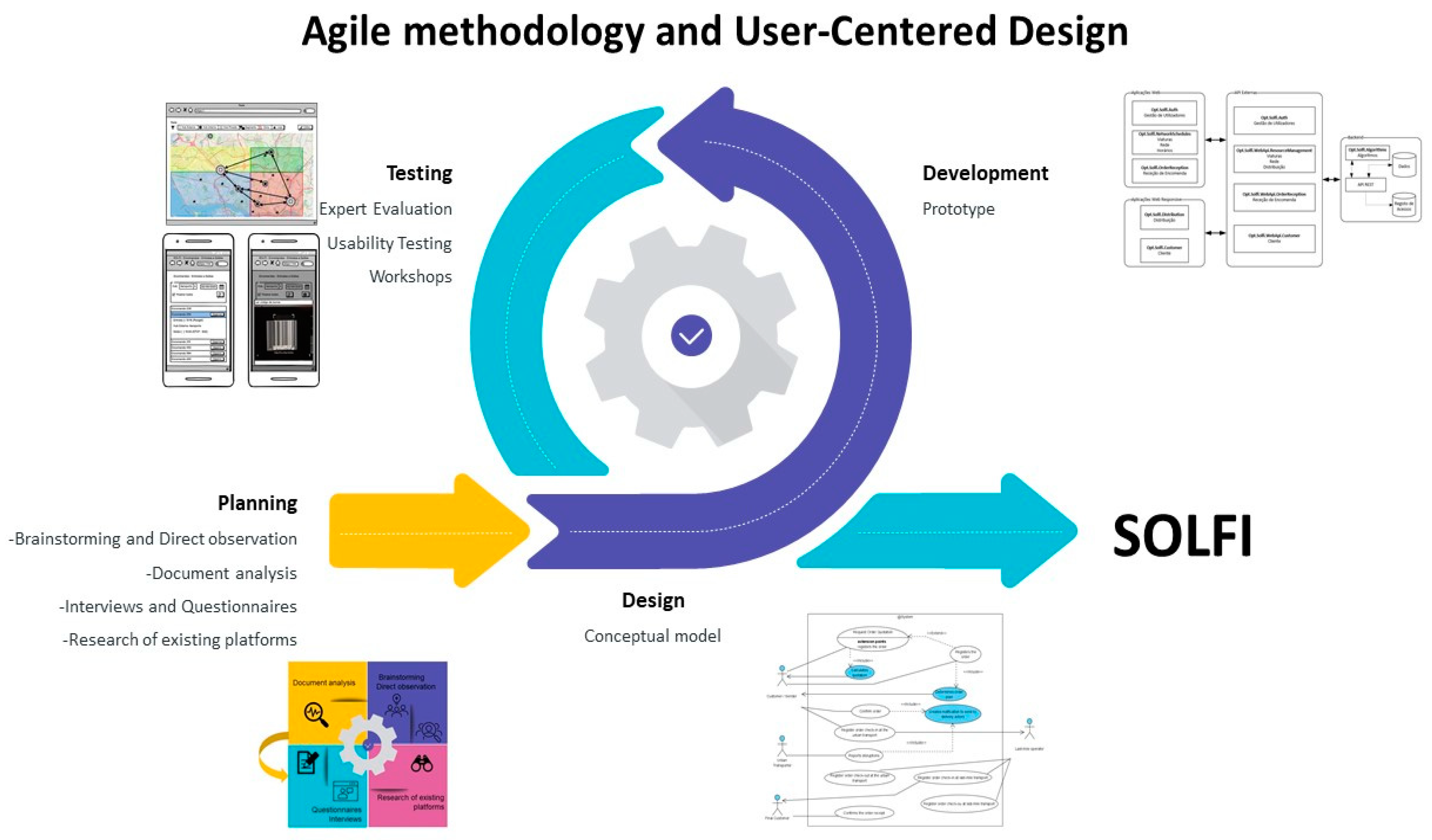
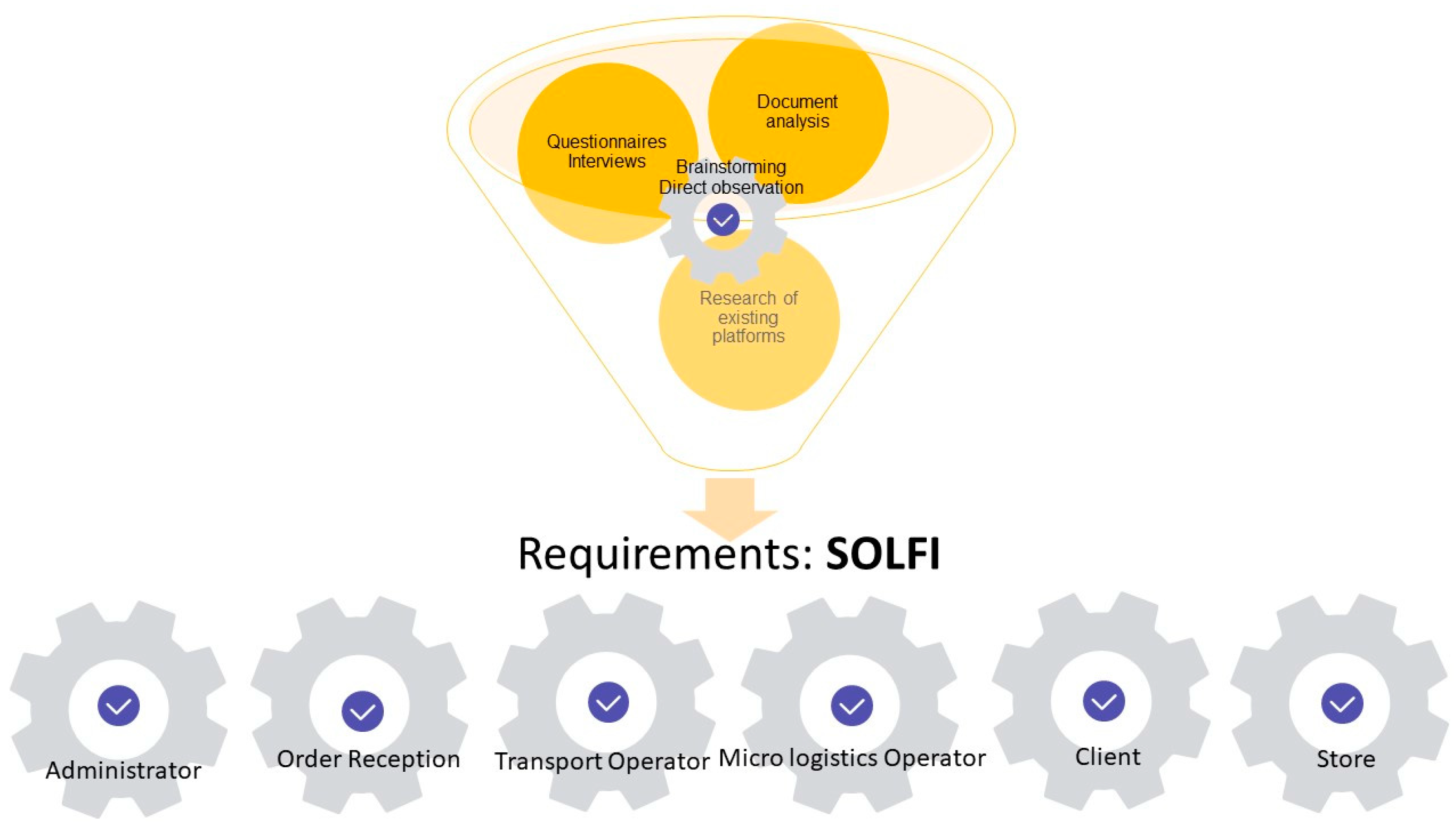
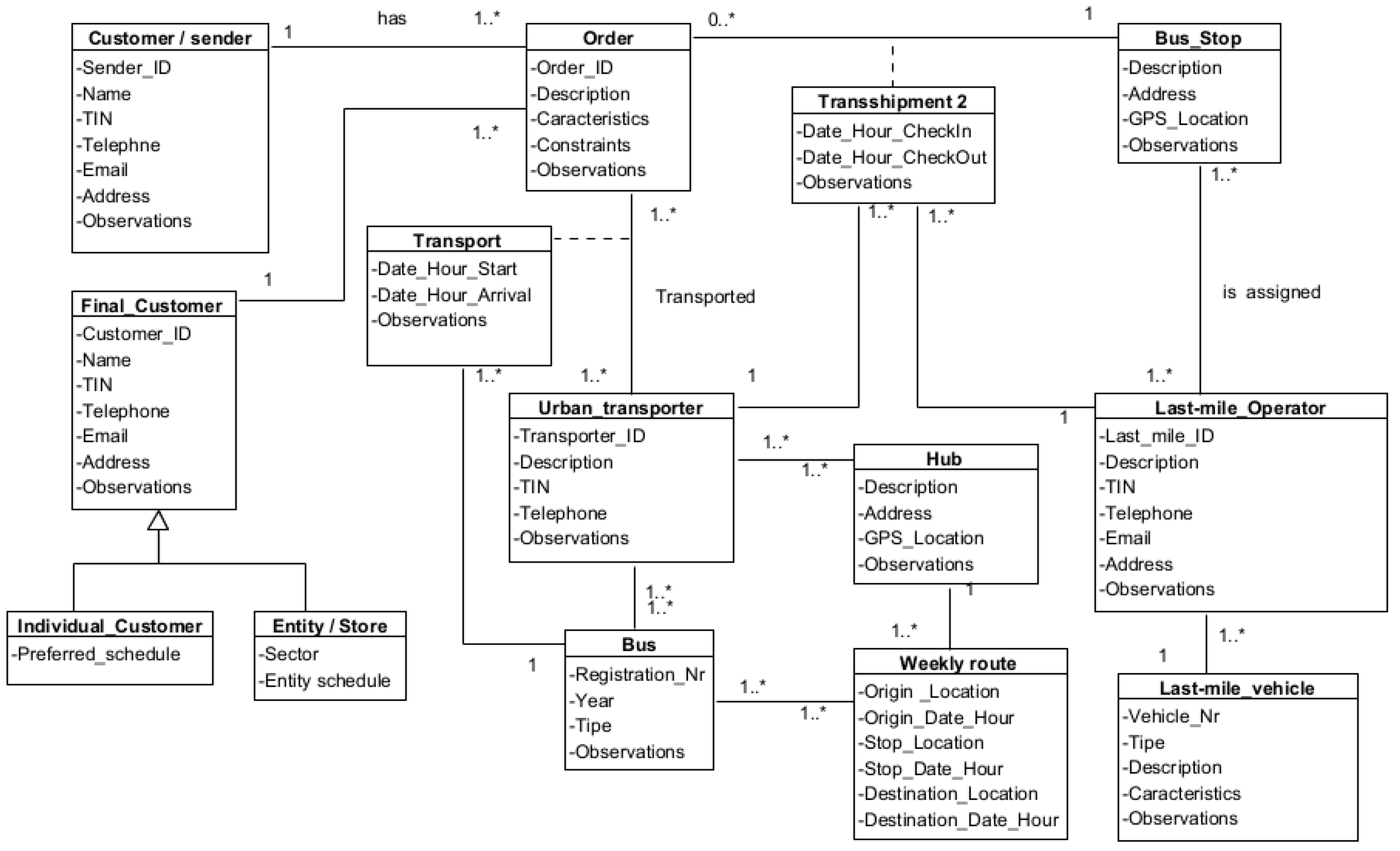
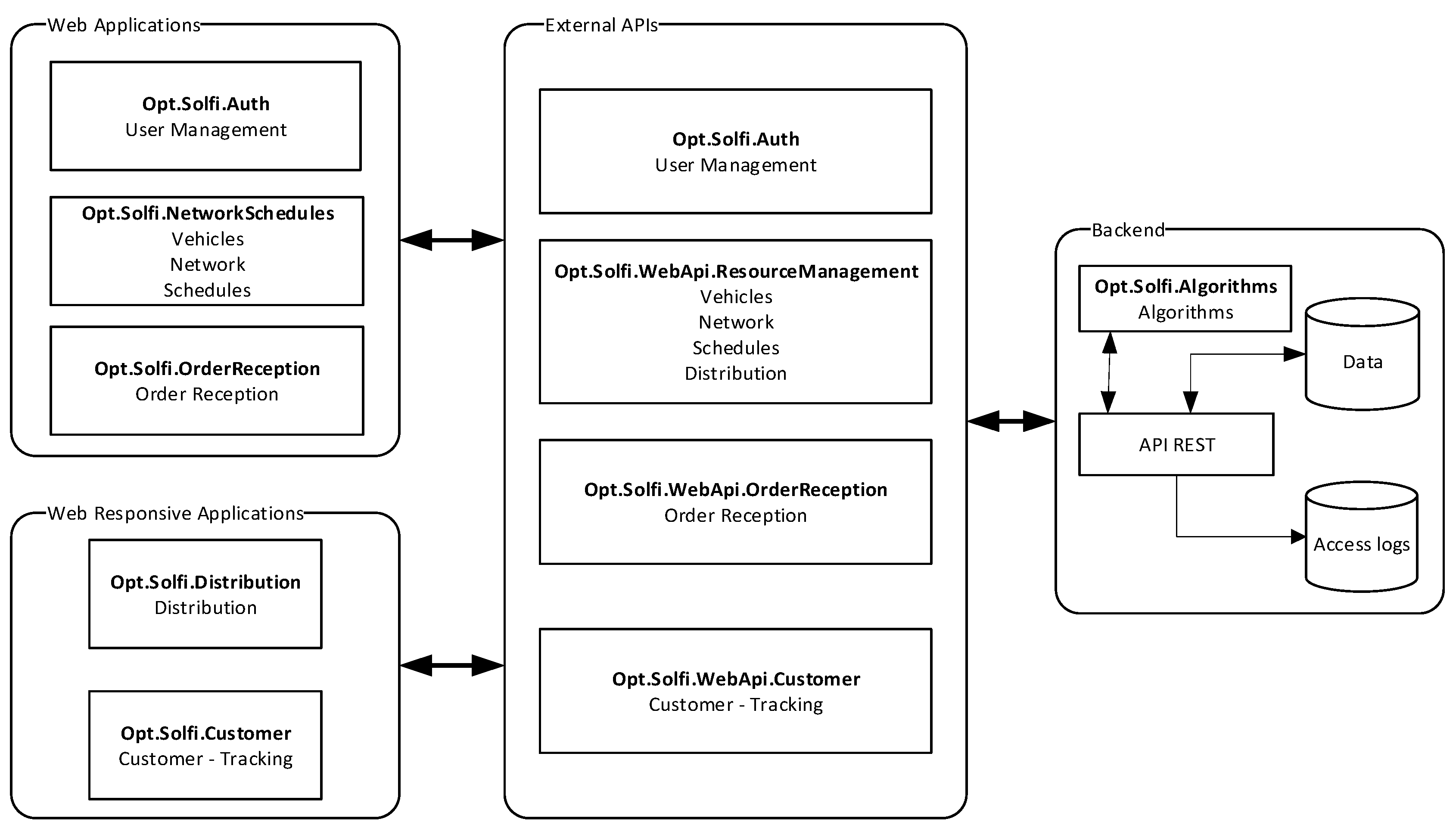
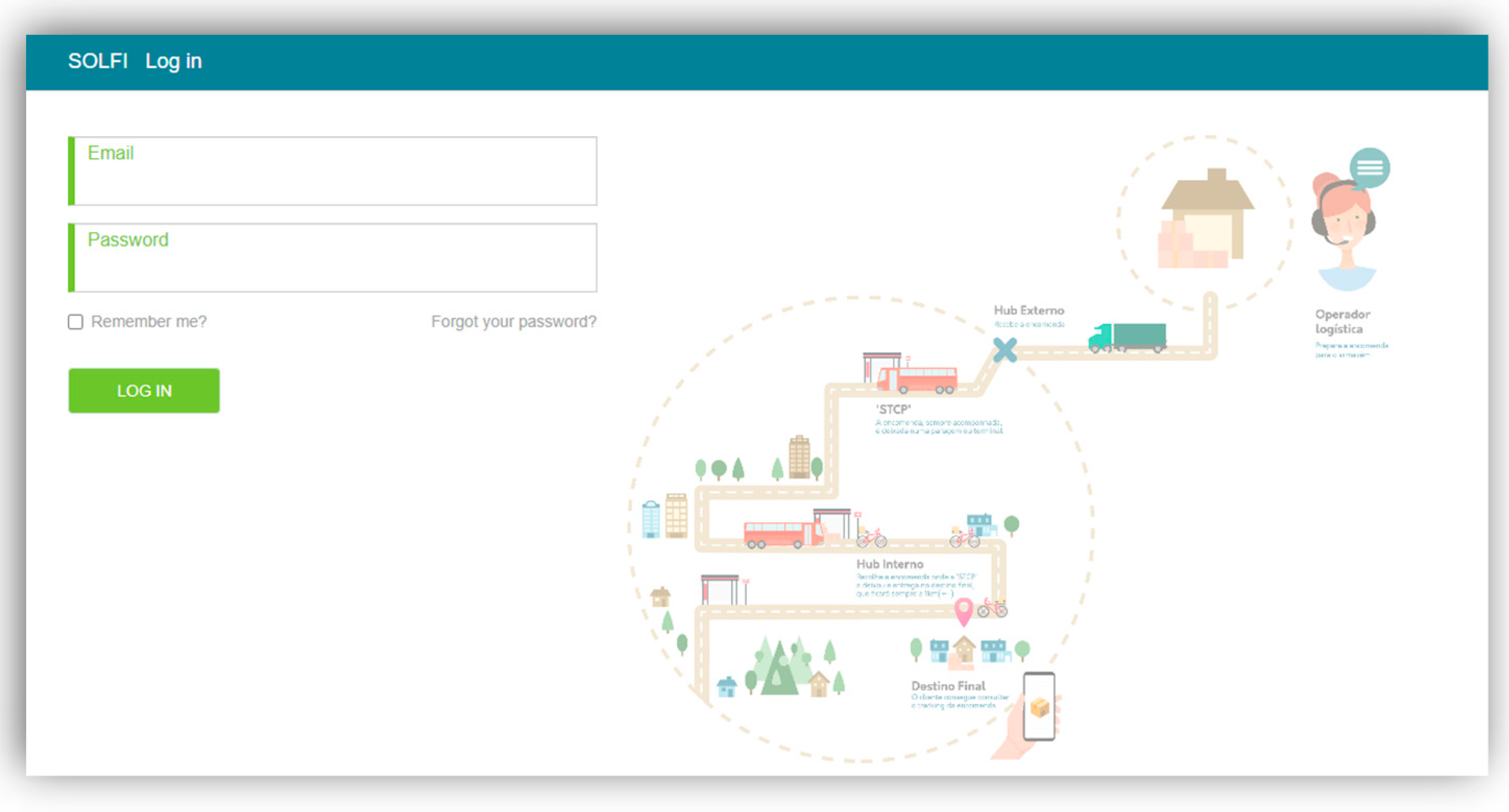
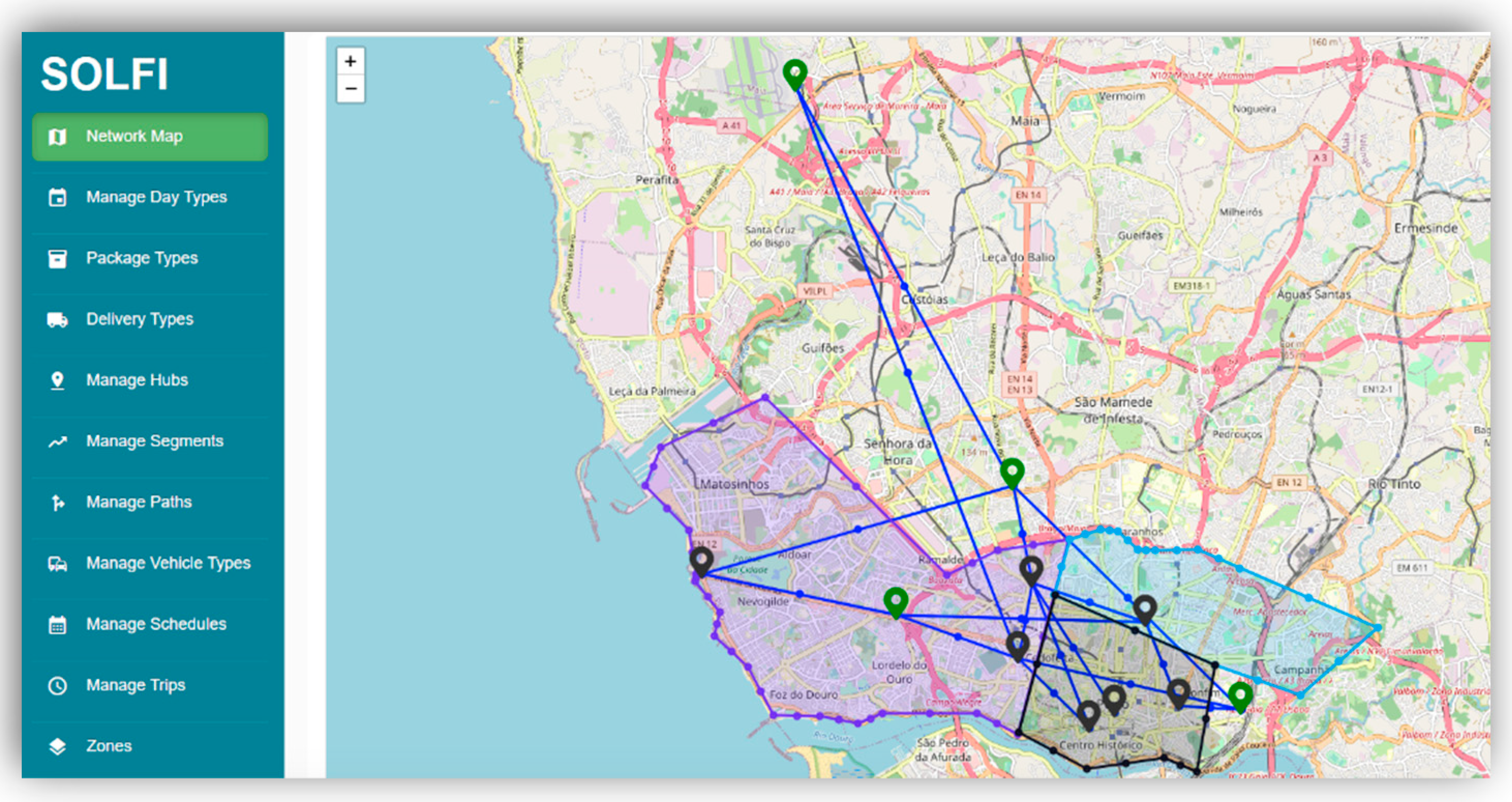
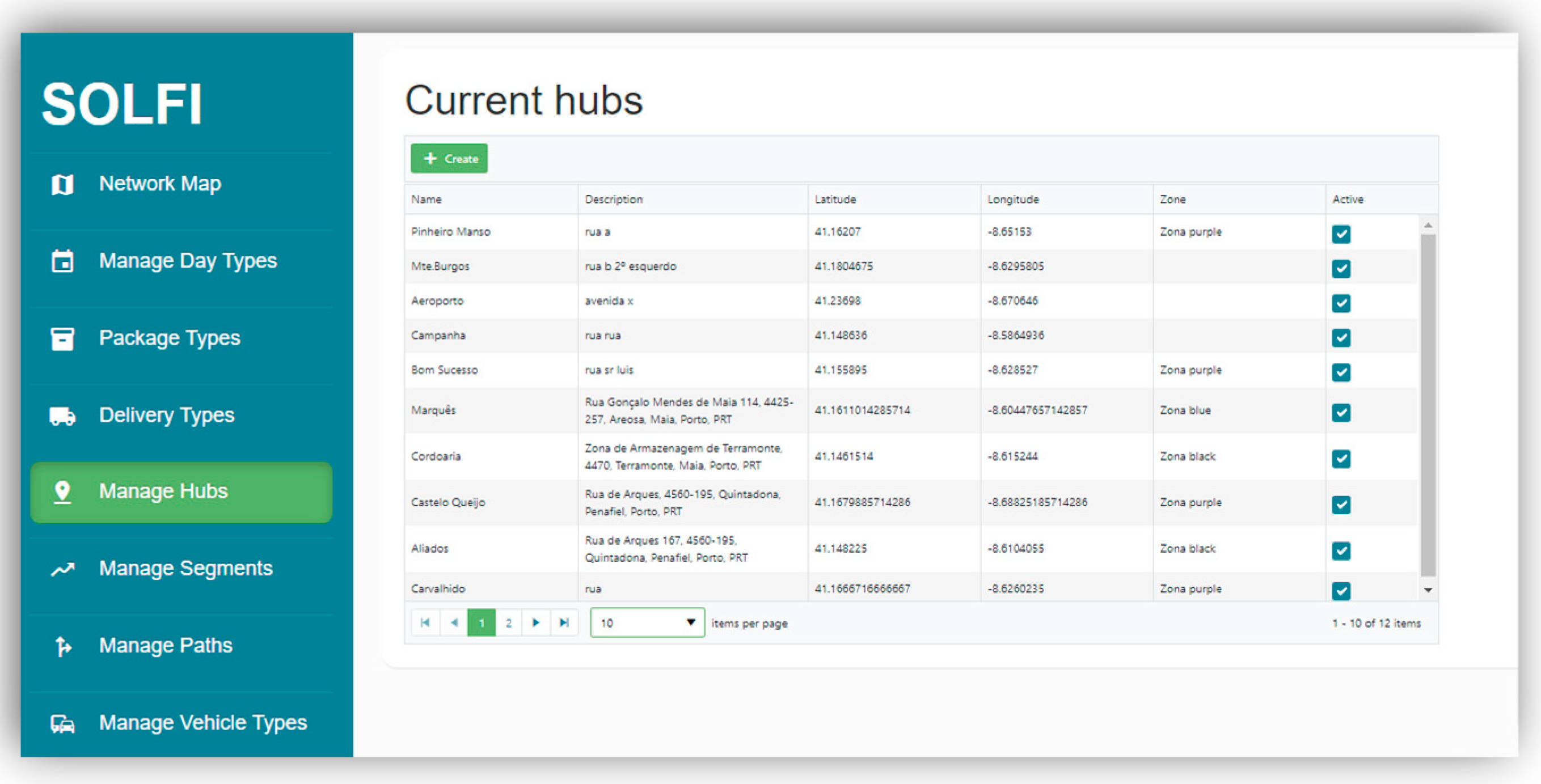
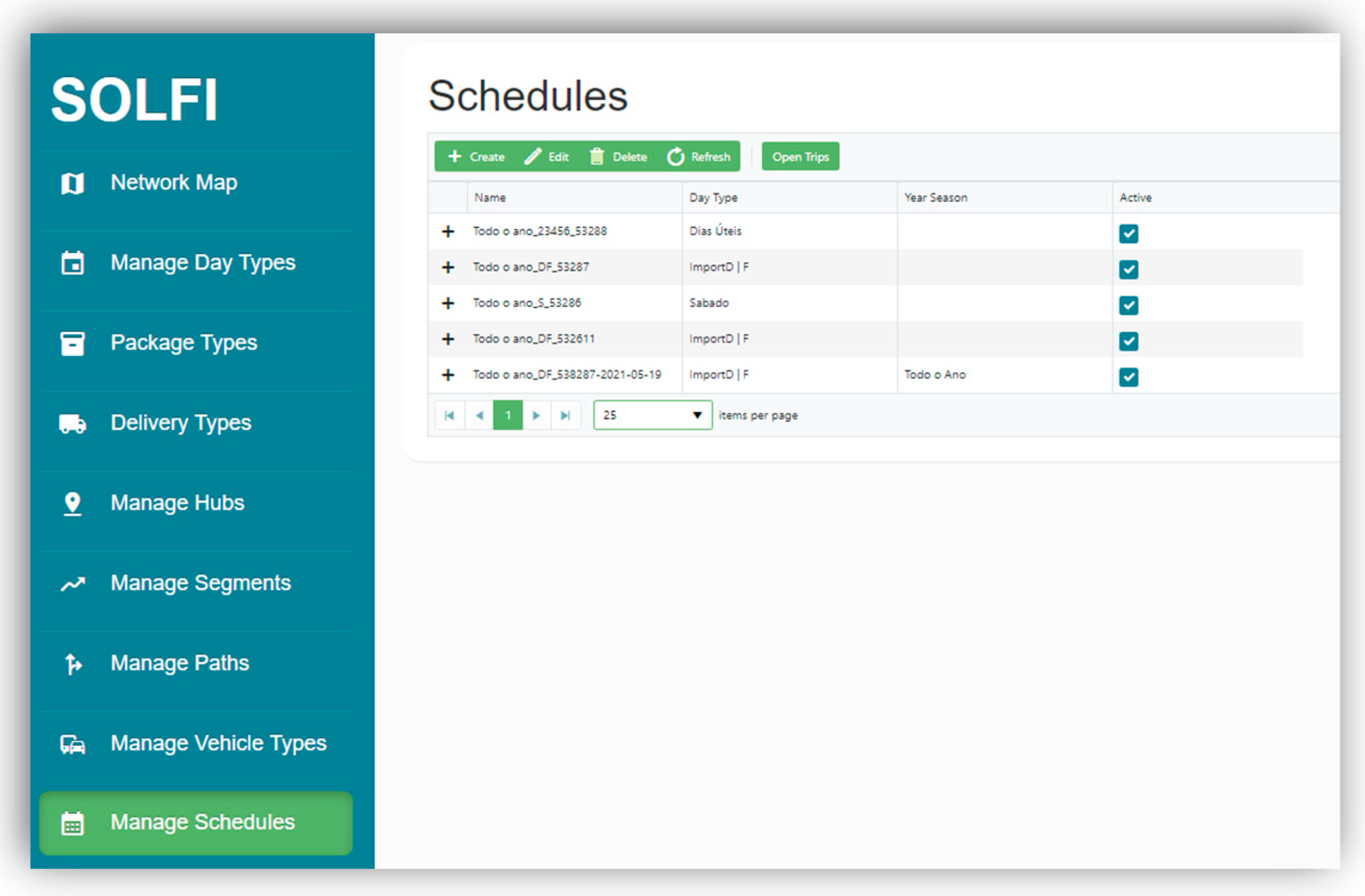
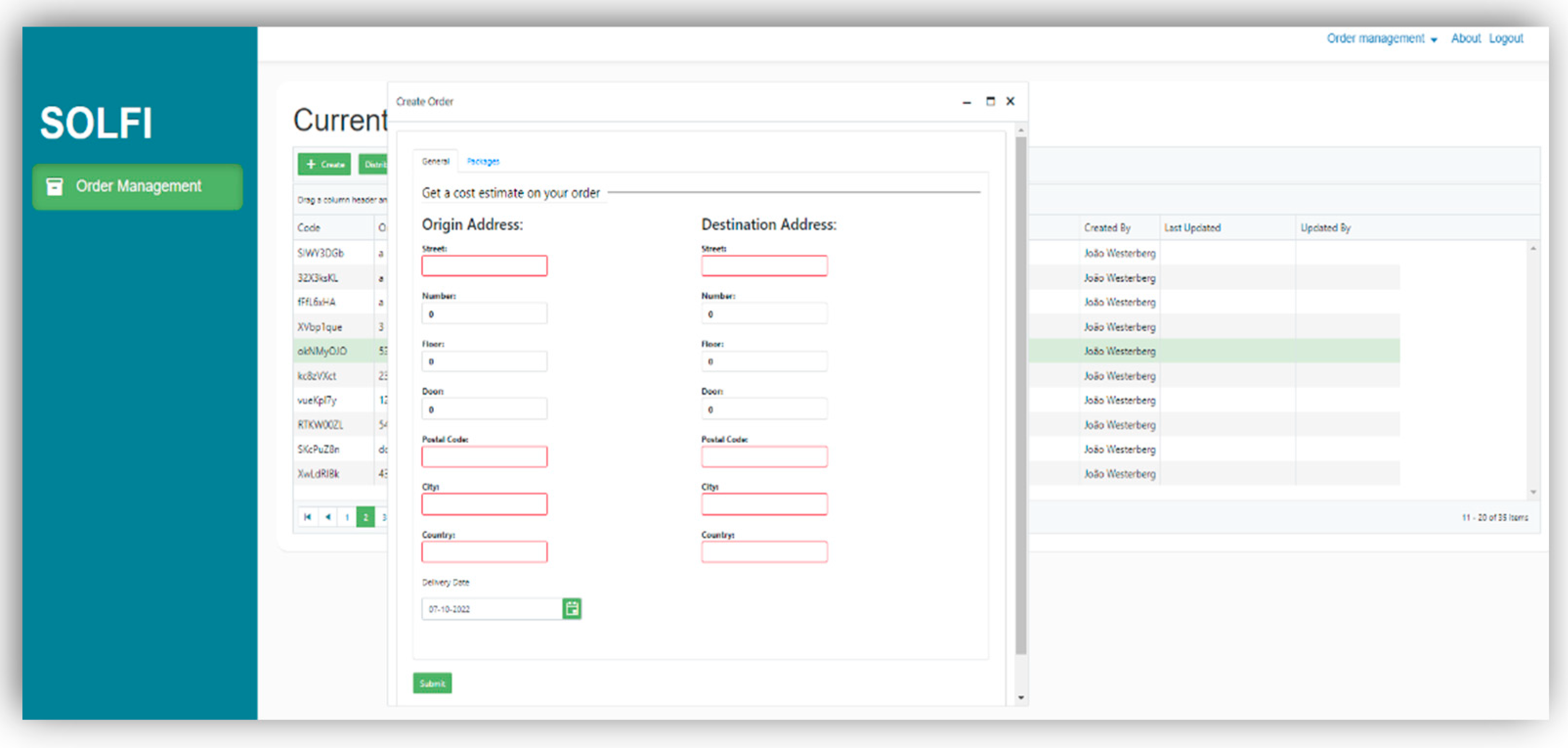



| Platform | Place | References |
|---|---|---|
| A platform enabling the pursuit of a new paradigm of urban freight distribution management tackling the limited access to incentives for sustainable operators. | Metropolitan Areas in Italy | [11] |
| Decision Support System to overcome the difficulties generated by the collaborative transportation between a traditional fleet and green last-mile deliveries (adoption of bikes). Prototype platform designed to support layer for the growing business of the companies that operate in the last mile in the cities in an isolated way. | --- | [13] |
| A decision-aided tool for simulating and optimizing alternative solutions to road transportation in a city. A platform enabling the pursuit of a new paradigm of urban freight distribution management tackling the limited access to incentives for sustainable operators. Decision Support System to overcome the difficulties generated by the collaborative transportation between a traditional fleet and green last-mile deliveries (adoption of bikes). Prototype platform designed to support layer for the growing business of the companies that operate in the last mile in the cities, in an isolated way. | --- | [12] |
| A decision support system to simulate and optimize alternative solutions to road transportation in a city. | Grand Paris Sud | [14] |
| Software | Features | Type | URL |
|---|---|---|---|
| anyLogistix |
| not only operates for logistics but also for manufacturing and retail | https://www.anylogistix.com/ (accessed on 10 December 2022) |
| AscendTMS |
|
| https://inmotionglobal.com/ (accessed on 10 December 2022) |
| OpenLMIS |
|
| https://openlmis.org/ (accessed on 10 December 2022) |
| QuickBox |
|
| https://software-transportes-logistica.com/ (accessed on 10 December 2022) |
| Requirement Name | Description | Module | |||||
|---|---|---|---|---|---|---|---|
| Administrator | Order Reception | Transport Operator | Micro logistics Operator | Client | Store | ||
| Define Company | Create and change companies operating on the SOLFI platform. {Types of Companies are: Logistics Operator, Transport Operator and Micro Logistics Operator}. | X | |||||
| Create and Manage Pickup Point | A pickup point is characterized by address, geographic coordinates, and opening hours. | X | |||||
| Create and Manage Users | The administrator module allows to create users and change user profiles, create company users with the appropriate permissions, and manage the company’s users and profiles. | X | X | X | X | ||
| Define Vehicles | Vehicle types will be defined, essential for the generation of transport plans since the algorithm needs to know the available transport capacity. | X | X | X | |||
| Define Hubs | The definition of Hubs can be done through a form, but it should also be possible to do it directly through a map with the filling of the geographic coordinates being automated. | X | X | X | |||
| Define Segment | Allows operators to define connections between hubs. These connections, in an aggregated way, constitute a path. Logistics and transport companies must define their trip. | X | X | ||||
| Define Trip | Each operator defines the trips taken. These trips are composed of a set of segments and a list of paths. | X | X | ||||
| Define Schedules | Each system operator (logistics and public transport companies) must define the time for their trip or the maximum delivery time from a hub. | X | X | X | |||
| Request Order Quotation | After entering the order data, the system estimates the final quotation and, based on this, makes plans using algorithms and optimization models to transport the respective order. | X | |||||
| Order Registration | To register an order, the following information is required: the address of the sender; the recipient’s address; recipient contact; package type; and length, width, height and weight of the package. | X | |||||
| Consult Distribution Plans | The operator who registered the order can consult the complete distribution plan, which includes all the hubs through which the order is expected to pass (with estimated date/time of passage through the hub), all the paths that the order will take and which operator will carry it on each path. The remaining operators will only be able to consult the information of the distribution plan of an order regarding the part of the transport that will have to be carried out. | X | X | X | |||
| Consult Transport Plans | Each operator can consult the orders that it will have to transport in each vehicle, for each path segment, that is, between hubs. | X | X | X | |||
| Check-in/Check-out of Orders | Indicate the Check-in/Check-out of an order in a hub, vehicle or that has been delivered. | X | X | X | X | ||
| Disruption Communication | Every time a problem arises that affects the delivery of the order (eg., delay, traffic, accidents, breakdown), it must be possible to report a disruption. This communication should indicate the type of disruption and the expected time of delay so that the algorithms can calculate new distribution plans, alert the other operators that should transport the order later, as well as update the tracking for the customer. | X | X | X | X | ||
| Manage Schedules of Pickup Point | The pickup points must manage their opening hours. This schedule is important to produce distribution plans for orders. | X | |||||
| Tracking | At any time, a customer can consult the tracking of an order. A list of places where it has been, the disruptions that may have occurred, as well as the expected delivery period of the order, must be presented. | X | |||||
Disclaimer/Publisher’s Note: The statements, opinions and data contained in all publications are solely those of the individual author(s) and contributor(s) and not of MDPI and/or the editor(s). MDPI and/or the editor(s) disclaim responsibility for any injury to people or property resulting from any ideas, methods, instructions or products referred to in the content. |
© 2023 by the authors. Licensee MDPI, Basel, Switzerland. This article is an open access article distributed under the terms and conditions of the Creative Commons Attribution (CC BY) license (https://creativecommons.org/licenses/by/4.0/).
Share and Cite
Teixeira, L.; Ramos, A.L.; Costa, C.; Pedrosa, D.; Faria, C.; Pimentel, C. SOLFI: An Integrated Platform for Sustainable Urban Last-Mile Logistics’ Operations—Study, Design and Development. Sustainability 2023, 15, 2613. https://doi.org/10.3390/su15032613
Teixeira L, Ramos AL, Costa C, Pedrosa D, Faria C, Pimentel C. SOLFI: An Integrated Platform for Sustainable Urban Last-Mile Logistics’ Operations—Study, Design and Development. Sustainability. 2023; 15(3):2613. https://doi.org/10.3390/su15032613
Chicago/Turabian StyleTeixeira, Leonor, Ana Luísa Ramos, Carolina Costa, Dulce Pedrosa, César Faria, and Carina Pimentel. 2023. "SOLFI: An Integrated Platform for Sustainable Urban Last-Mile Logistics’ Operations—Study, Design and Development" Sustainability 15, no. 3: 2613. https://doi.org/10.3390/su15032613
APA StyleTeixeira, L., Ramos, A. L., Costa, C., Pedrosa, D., Faria, C., & Pimentel, C. (2023). SOLFI: An Integrated Platform for Sustainable Urban Last-Mile Logistics’ Operations—Study, Design and Development. Sustainability, 15(3), 2613. https://doi.org/10.3390/su15032613









